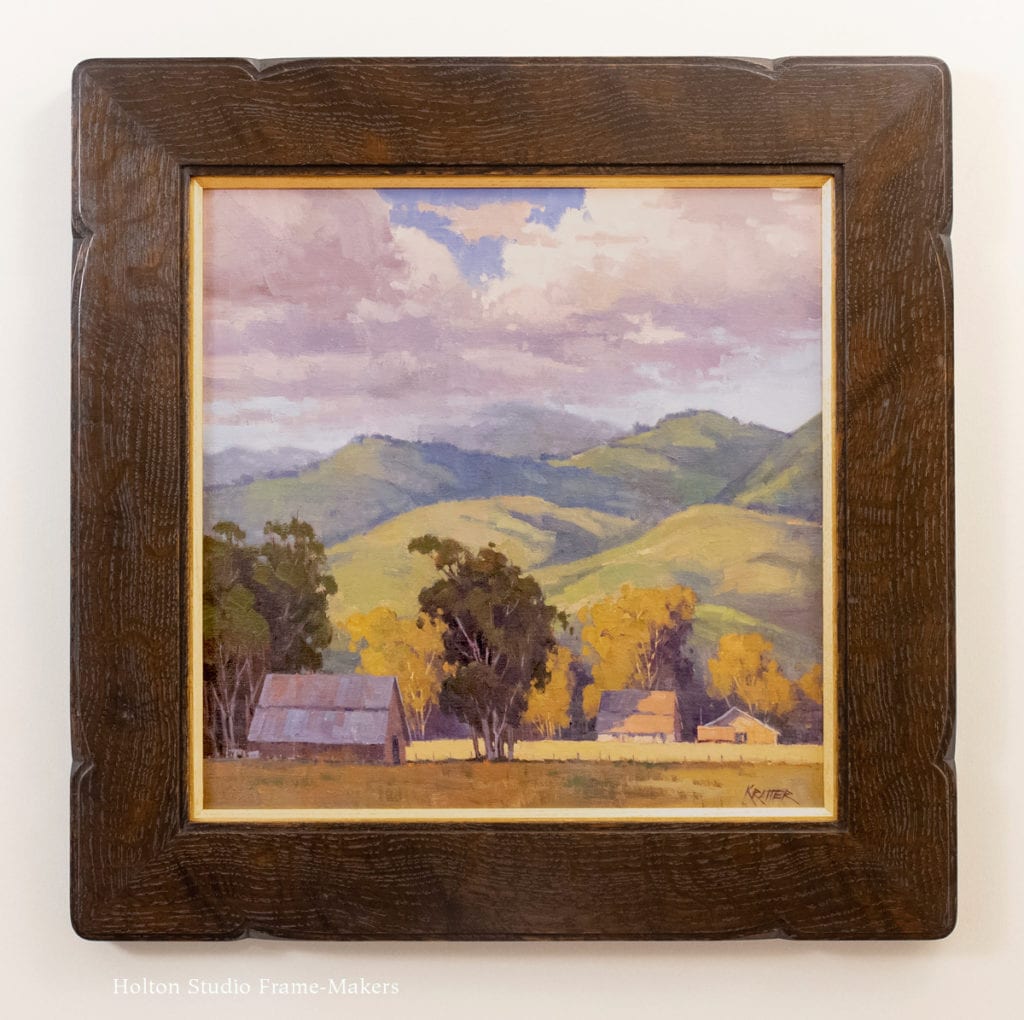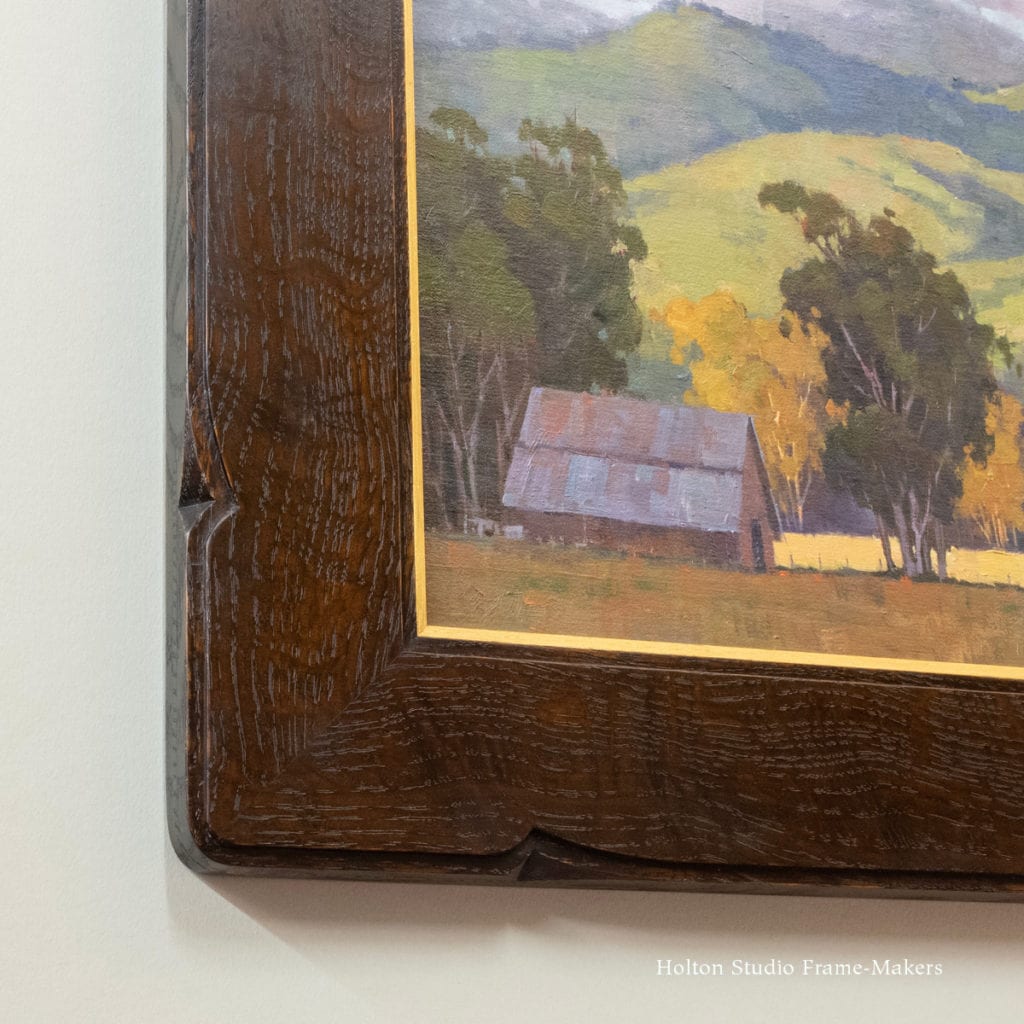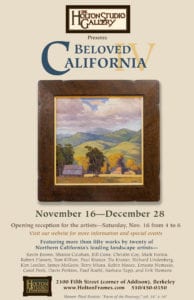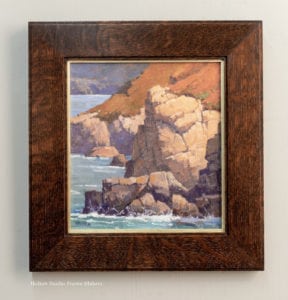“Find your place on the planet. Dig in, and take responsibility from there.”—Gary Snyder
Our first show after moving to Berkeley from Emeryville three years ago this past summer was an all-gallery exhibition of our outstanding roster of Northern California landscape painters. Looking for a name for the spirit that impels artists out to paint our local landscape, we decided to call the show Beloved California. The show was such a success and such fun that we followed it up the next year with Beloved California II, then last year with—you guessed it—Beloved California III. So now we’re up to Beloved California IV, and this is the best one yet, featuring more than fifty paintings by twenty outstanding artists.
The show opens in two weeks, with a reception on Saturday, November 16 from 4 to 6. Come join us in toasting these artists whom we’ve grown so fond of and whose dedication to their art and to this special “place on the planet” we so deeply appreciate. The show runs through December, closing December 28 with an open house (details to come). Visit the show’s webpage…
As always, we have framed all the paintings in the show. I aim to do a series of posts featuring selections from the show and how we framed them. So I’m starting with the painting we chose to use on the poster and postcard. It’s by our great friend and gallery stalwart Paul Kratter. This is a 16″ x 16″ canvas titled “Farm of the Freeway.” It seems to exemplify the fine bit of advice from one of our region’s stellar poets, Gary Snyder, quoted above.
 On the back of the panel, Paul wrote down a little story that explains the work’s title: “Painted on a Friday afternoon on a small road in Livermore. It must have been a short-cut, because there was a constant rush of cars buzzing by me.” But while those hurried drivers spend their lives trying to be somewhere else, careless of the timeless beauty of where they are, this farm appears to be a place where folks are dug in. And so Paul honors it in oil paint made to endure hundreds of years.
On the back of the panel, Paul wrote down a little story that explains the work’s title: “Painted on a Friday afternoon on a small road in Livermore. It must have been a short-cut, because there was a constant rush of cars buzzing by me.” But while those hurried drivers spend their lives trying to be somewhere else, careless of the timeless beauty of where they are, this farm appears to be a place where folks are dug in. And so Paul honors it in oil paint made to endure hundreds of years.
This is one of my absolute favorite paintings we’ve had from Paul. I love the foreground shadow and the characteristic hills in their winter green, which reminds me, along with the clouds, of the wonderfully wet winter we had last year, and fills me with hope of seeing more rain soon. It also features the trees that Paul’s become famous for. (Check out his new video on how to paint trees.) And I’m always a sucker for barns like this that have quietly and over many years become one with the landscape—again, dug in.
 About the Frame
About the Frame
For Paul’s painting, I decided on a fairly plain frame design, but using a quartersawn white oak board with especially wonderful and wild figure—a board that I’d set aside till just the right project came along. As you can see, the undulations in the grain quietly echo the painting’s undulating hills, clouds and even suggest the tree trunks.
This is a good example of a first principle I’ve been expounding in the series of presentations I’ve been doing over the course of this year covering a frame-maker’s approach to framing various types of pictures (beginning with antique Japanese prints, and most recently black and white portrait photographs). That principle is that the frame’s effectiveness and power depend first of all on the natural material it’s made of, because nothing we make can be as beautiful as what nature has made.
This first principle goes to the first of the three beautiful things necessary to a beautiful frame. The second beautiful thing is care—that is, careful and thoughtful workmanship. As are all our mitered frames, this one is splined and finished after it’s joined. It’s a simple frame, but it’s made right. And things made right convey the care that was put into them.
The third beautiful thing is the frame’s relationship to the picture—the harmony and interdependence between picture and frame; the joining of two arts. The simplest version of this profile, which is a flat with a small step (or fillet) on the inside and outside edges, is one we’ve used on Paul’s paintings before (an example is shown at right), and I’ve always liked how it works with his confidently defined, graphic style. This past year I’ve enjoyed combining the simple filleting of this profile with chamfered details and patterns to articulate the corners. (Good examples are on the post “Framing Three RTK Studio Tiles.”) For the frame for “Farm of the Freeway,” a frame alive to this picture, I tapped those explorations to shape the corners to repeat the rounded clouds and hills.
A Responsibility
As you’re no doubt aware, California’s landscape now faces terrifying threats from wildfire. Paul himself had to evacuate his home in Moraga just a couple of weeks ago when a fire broke out in the woodlands adjacent to his neighborhood. Scheduled at the end of the calendar year, “Beloved California” has come during, or in the wake of, the intense fall fire season. Each year, as the threat to these places our painters celebrate in their work grows, our appreciation and love for the land—the spirit of our title—grows and deepens as well. As I wrote in the show description for the first “Beloved California”, a painting says, Consider this. This matters. Three years later, I’d put it a little differently: a painting says, Pay attention to this. This matters. Because to pay attention to something doesn’t mean simply to idly consider it. It means to attend to it; it implies action.
It means, turn off from the rush of the road—stop the car, kill the engine, and get out and put your feet down on the land where they belong: your place on the planet. Dig in to the earth beneath your feet, our beloved California. And take responsibility from there—attend to it.
Again, the show is from November 16 through December 28, with a reception on Saturday, November 16 from 4 to 6. More on the show here.
« Back to Blog
